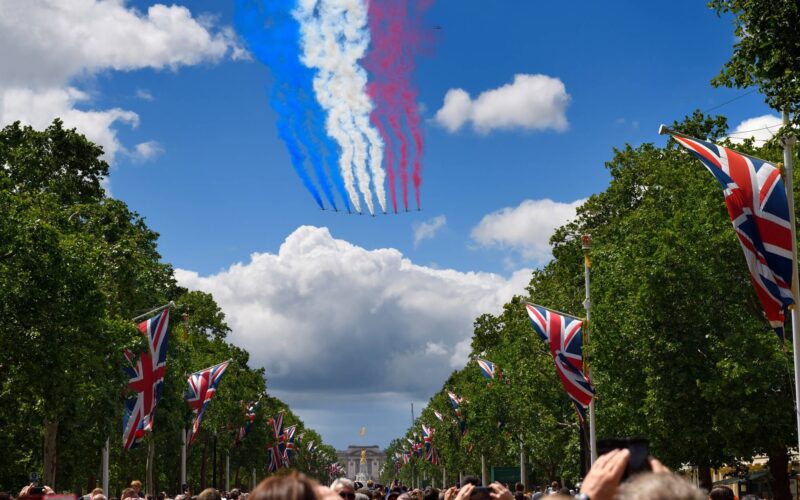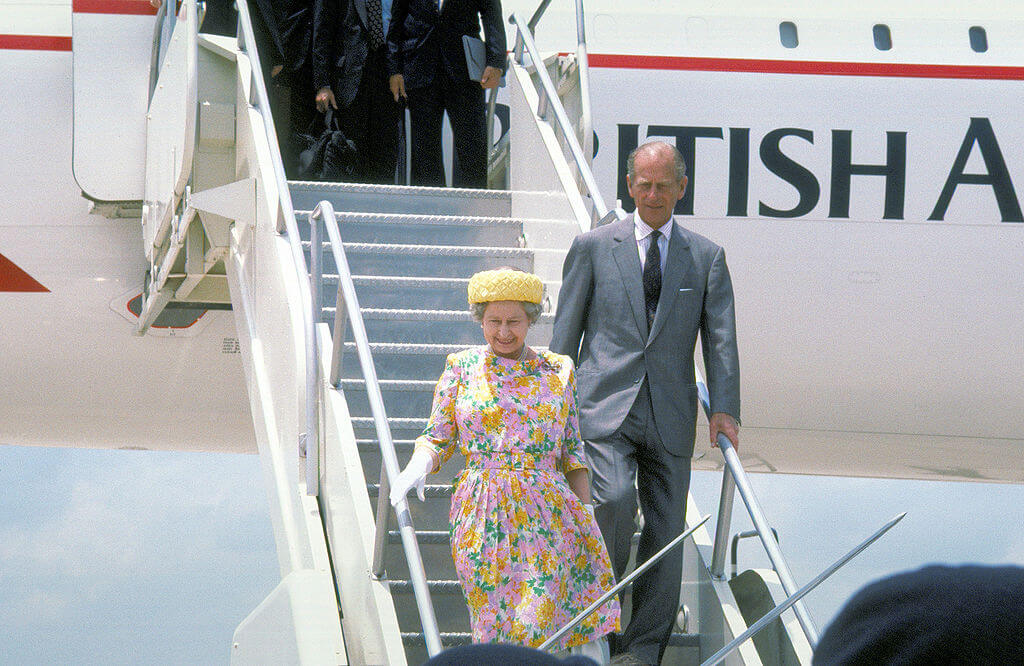The 70 years of the reign of Queen Elizabeth II have seen groundbreaking advances in aviation technology. As an homage, AeroTime looks at the evolution of aviation before the Queen’s eyes.
A pioneer
Though she was not an airplane but an auto mechanic during the Second World War, then-Princess Elizabeth was already accustomed to aircraft before she even ascended to the throne.
In January 1952, she embarked with her husband, the Duke of Edinburgh – a passionate pilot – on a tour of Africa aboard a British Overseas Airways Corporation (BOAC) Canadair Argonaut named ‘Atalanta.’ King George was deemed too ill to make the flight himself, and thus the Princess was chosen to represent her father.
The Argonaut was an upgraded variant of the Douglas DC-4 piston-engine aircraft. It featured Rolls-Royce Merlin engines, which had proved their worth during the war in combat aircraft such as the Supermarine Spitfire or the Avro Lancaster.
A month after embarking on the tour, she learned King George had passed away. The Princess flew back from Uganda to Libya, and then back to London, where she was crowned Queen Elizabeth II.
In June 1953, Queen Elizabeth II made aviation history when she embarked along with the Queen Mother and Princess Margaret in a De Havilland DH106 Comet airliner of the British Overseas Airways Corporation (BOAC).
The VIP flight made her the first royal ever to embark on a jet-powered flight and helped popularize this new technology by showing how safe it was, even for the Queen and her two daughters.
However, less than a year later, two fatal crashes revealed critical flaws in the Comet design. “I still shudder every time I think of that flight,” Sir Miles Thomas, the BOAC chairman at the time who was also on the flight, later said in an interview.
During her reign, the Queen continued to be transported on commercial flights chartered from British air carriers. Thanks to her status, the monarch never needed a passport to fly. Indeed, as British passports are issued in the name of the Queen, it would have seemed redundant that she had issued one for herself.
On November 2, 1977, at the end of her Silver Jubilee, the Queen boarded a British Airways flight. But not on just any aircraft: it was the Concorde G-BOAE. The flight, from Barbados to Heathrow, was the first supersonic flight that Queen Elizabeth II experienced, but not the last. She used the legendary airliner for at least four more official visits.
Queen Elizabeth II and Prince Philip disembarking from Concorde (Credit: U.S. National Archives)
Her relationship with commercial aviation continued all the way to 2011, with the Queen’s last visit to Australia. For this occasion, the Queen and the Duke of Edinburgh boarded a British Airways Boeing 777-200ER. What was her last scheduled long-haul flight was also the national carrier’s first flight directly from Perth to London, its longest non-stop flight ever flown.
The Queen’s Flight
Historically, The Queen’s Flight, a dedicated fleet formed by her father as the world’s first head of state aircraft unit, was only dedicated to short-haul and regional flights. Surprisingly enough, it was not before 1986 that the unit acquired its first jets: two British Aerospace BAe 146 aircraft fitted with a VIP cabin.
In 1995, as a way to reduce operating costs, The Queen’s Flight was merged into No. 32 Squadron of the Royal Air Force, which became No. 32 (The Royal) Squadron. The fleet of BAe 146 and BAe 125 was integrated into the squadron, along with an array of helicopters.
The Queen’s Helicopter Flight, however, remained a separate fleet. Created in 1998, it uses two large Sikorsky S-76C++ helicopters in Royal livery and employs a small team of pilots dedicated to providing helicopter service to Members of the Royal Family on official engagements.
One of the Sikorsky S-76C++ used by The Queen and the Royal family (Credit: Mark Harkin / Wikimedia Commons)
In 2022, the No. 32 Squadron took delivery of two Dassault Falcon 900LX business jets – the first Dassault and fourth French airplane ever to be operated by the RAF. Designated Envoy IV CC.1, the two aircraft are currently flown by mixed crews of RAF and civilian pilots. After receiving military upgrades, they will officially be induced by the RAF No. 32 Squadron in April 2024. It was on one of these aircraft that seven members of the Royal Family landed in Scotland on September 9, 2022, hours before the announcement of the death of Queen Elizabeth II in Balmoral Castle.
In her 70 years of reign, Queen Elizabeth II has seen tremendous changes in aviation, both military and civilian. The Queen’s Platinum Jubilee, held in June 2022, was a testament to that, with a flypast including both the past and the present of British aircraft.



